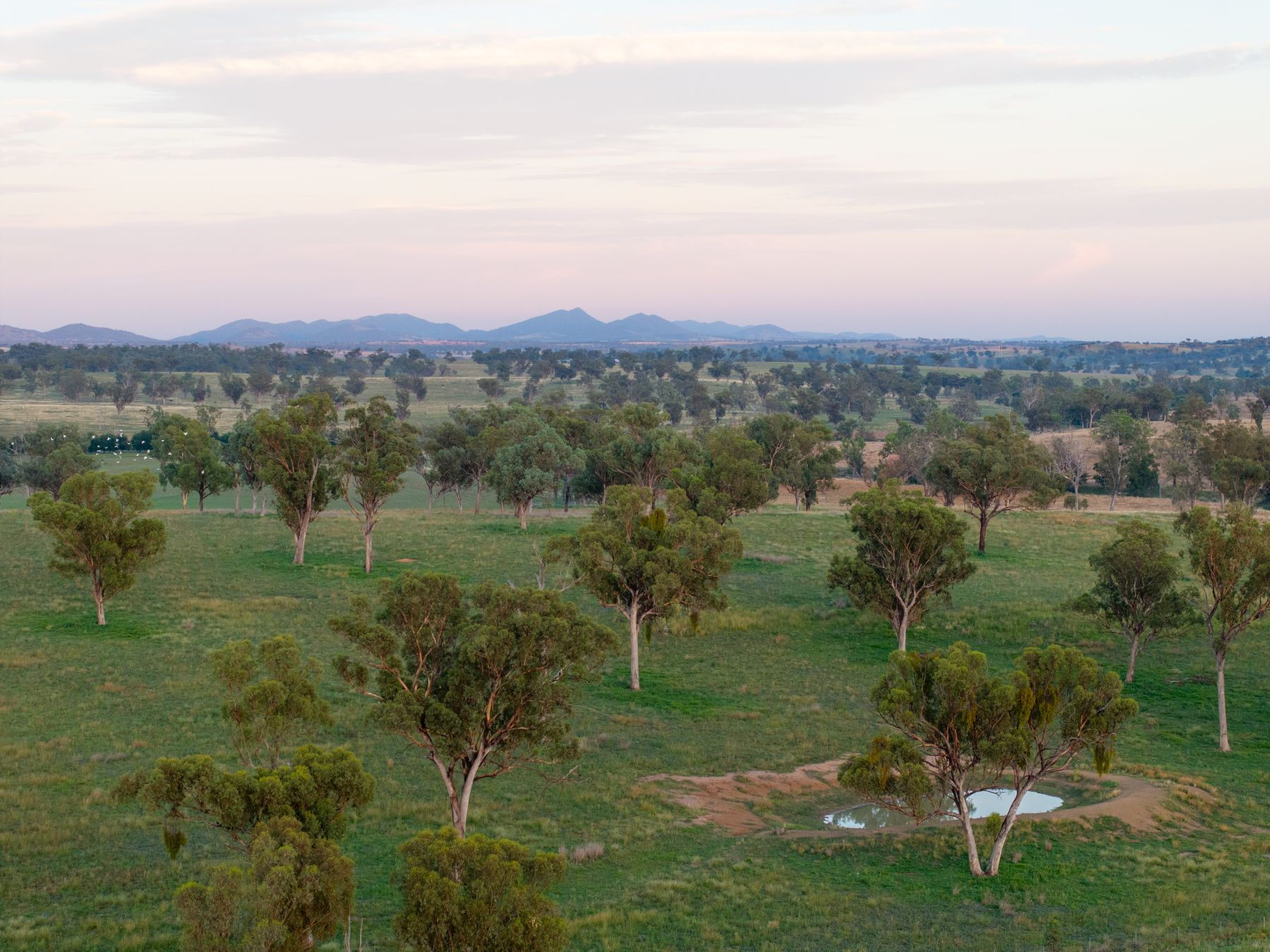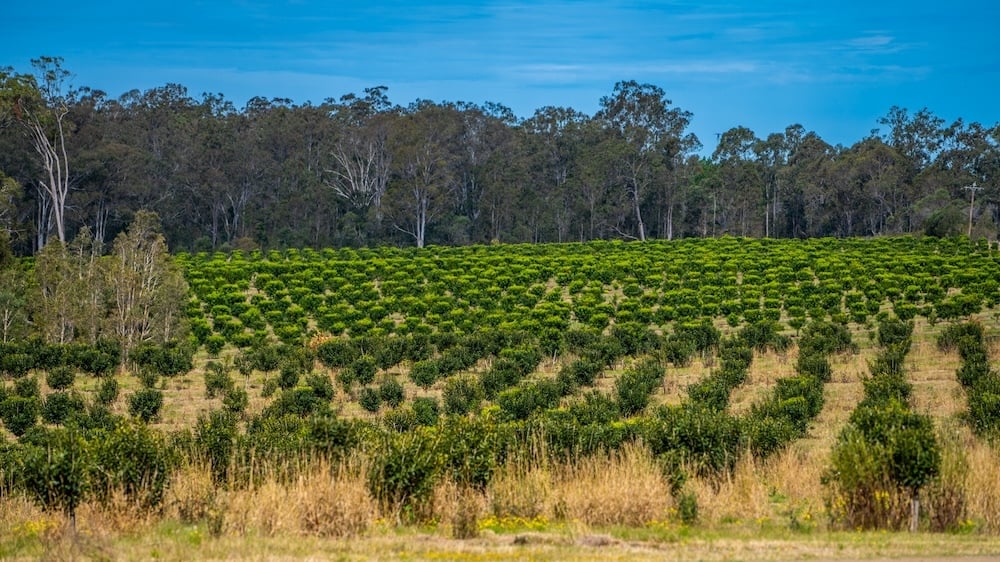$200m deal caps big week in Australian farm sales
Each week, we take the pulse of rural property - from sales data to who’s making headlines. Check out this week's report from Kylie Dulhunty.
7 min read
 Kylie Dulhunty
:
May 6, 2025
Kylie Dulhunty
:
May 6, 2025

Australian farmland has recorded its 11th straight year of growth, with the national median price hitting a new record in 2024 of $10,231ha—yet signs of cooling momentum suggest the boom is easing.
The national median farmland price rose 6.9% last year, according to the latest figures from Bendigo Bank Agribusiness.
The Bendigo Bank Agribusiness Farmland Values Report, released today, shows a distinct slowdown from the double-digit gains seen between 2018 and 2022, even as the sector’s long-term fundamentals remain strong.
In total, 4.7 million hectares of farmland changed hands in 2024, equivalent to an area larger than Denmark.
The volume of transactions also increased, up 5.8% to 7,154 deals nationally—but this was still the third lowest figure in 30 years.
Bendigo Bank Agribusiness Senior Manager Industry Affairs Neil Burgess said prices rose in five of the seven states and territories measured in 2024, with only Victoria (down 1%) and the Northern Territory (down 33.7%) recording a dip.
“We have seen farmland values steady in 2024 following that slowdown of growth, which we saw throughout 2023,” he said.
“It's fair to say that while this is the 11th consecutive year of growth, we are seeing a notable cooling in the rate of those annual increases compared to the real heady years of 2018 to 2022 when the median price, the growth, more than doubled.”
“And if we look in the past decade, we've seen that national median price actually triple and it's grown by just over 200%.
“So to try and bring it back to a compounded annual growth rate over that period, you're looking at just over 11%.
“It is pretty solid growth over a sustained period of time.”

Tasmania recorded the strongest annual price increase of 14.2%, with the median price per hectare lifting to $23,202, while Queensland’s median price per hectare lifted 12.1% to $9870.
Western Australia also posted strong gains with an annual lift of 9.2% to $6,799/ha.
Mr Burgess said several key forces shaped the market last year.
“The underlying drivers of the Australian farmland market were more varied in 2024 with elevated interest rates a constant and with a greater mix of seasonal conditions,” he said.
“Favourable weather in NSW and Queensland has been in stark contrast to the significant lack of rain experienced in southern regions, which has been reflected in farmland prices.
“The sharp rebound in livestock prices across late 2023 and into 2024 drove a substantial improvement in buyer sentiment, particularly across NSW and Queensland, with demand for farmland in grazing regions surging after an underwhelming performance throughout 2023. ‘
Looking across the country, South and West Gippsland recorded the highest median price by region at $29,335ha, followed by the Northwest region of Tasmania at $27,019ha.
In South Australia, Adelaide and Pleurieu recorded a median price of $22,488ha, while in Western Australia the Southwest had a median price of $17,236ha.
Southeast Queensland recorded a median price of $15,376ha and in NSW the Hunter region had a median price of $13,481ha.
Looking ahead, Mr Burgess expects the trend of moderate price growth to continue in 2025.
“We are seeing an easing of interest rates, and while that is probably a little bit shallower than was first anticipated, there are a number of cuts being factored in,” he said.
“So as one of the drivers for farmland value is access to capital, that is a tick on the positive ledger.
“There is always volatility in the commodity market and certainly the actions of the US administration at this point in time has, shall we say, added some additional volatility to the market.
“I think while the US runs a trade surplus with Australia, we have not been spared the impact of tariffs.
“Will that have a major impact on Australia? Our view is that it won't impact the industry as much as we initially thought.”
Mr Burgess said Australian beef was still highly sought in the US and the country had been creative in finding alternative markets.
“Our biggest fear with the Trump administration is the impact on China and the slowing of the economy as China is a major trading partner with Australia,” he said.
“But now the Chinese are looking to secure Australian beef instead of US beef, so sometimes there are silver linings to what appear to be dark clouds.”
Mr Burgess said anticipated interest rate cuts, while supportive, are unlikely to drive widespread resurgence in demand.
“Farmland availability remains tight and mixed seasonal conditions across the country, combined with ongoing uncertainty in global trade and commodity markets are expected to limit the prospect of substantial growth in 2025, so our outlook is for continuing moderate growth in farmland values across 2025,” he said.
Queensland farmland values surged 12.1% in 2024 to a record $9,870ha, marking five straight years of growth.
Transaction volumes also lifted 9.6% to 1,719 sales, though the area traded was the smallest since 1995, indicating tightening supply.
Almost every region recorded growth, with the Central Highlands posting the strongest annual rise of 21.5% to a new record high of $6,473ha.
Southeast Queensland became the state's highest-valued region at $15,376ha, driven by strong conditions in cropping and horticulture.
Only the Far North saw a price decline, while Western Downs was essentially flat.
“Queensland farmland values rebounded in 2024 after a slowdown in 2023,” Bendigo Bank Agribusiness Queensland’s Elisha-Vi Barker said.
“Demand for farmland was sustained as rallying cattle markets, a peak in interest rates and positive seasonal conditions provided a favourable outlook for Queensland agriculture. Prime cropping and grazing properties were in demand, and despite fluctuations in global sugar prices, sugarcane property values were stable.
“Horticulture markets are stable and larger growers looking to expand are key drivers.
“Flooding in western Queensland may slow down appetite early in 2025, but improved pasture growth and good conditions in other parts of the state should see demand for Queensland farmland remain firm through the year.”

NSW farmland values rose 7.2% in 2024, pushing the median price to $9,459ha and extending the state’s growth streak to 11 consecutive years.
Transaction volumes increased 12.1% year-on-year but remained below pre-2021 levels.
The strongest gains came from the Central West, up 11.8%, and Riverina Murray, up 10.9%, while the Hunter region was the only area to record a decline.
Southeast NSW saw the biggest jump in transaction volumes, lifting 30.5%.
The Far West region had only modest growth, but remained the top performer over five years with a compound annual growth rate (CAGR) of 27.5%.
“The median value of farmland in NSW continued to lift in 2024, although this was in part driven by an increase in transactions in the higher value regions such as North Coast and Southeast, as well as a decrease in the median parcel size sold,” Bendigo Bank Agribusiness NSW Craig Rosenbaum said.
“Buyer confidence increased in 2024 on the back of improved seasonal conditions and commodity prices, while stabilising interest rates and the outlook for the easing cycle to start was also supportive.”

Victorian farmland values dipped 1% in 2024—the state’s first decline since 2015—bringing the median price per hectare to $14,848.
While still the second-highest value on record, the softening reflects mixed market conditions across regions.
Transaction volumes rose 7% year-on-year but remain 22% lower than in 2022.
Central Victoria was a bright spot, lifting 9.9%, while Ovens Murray recorded the steepest fall at 21.5%.
South and West Gippsland dropped 5.5% but retained one of the state's highest median values at $29,335ha.
“The value of farmland in Victoria saw its first decline since 2015 in median price per hectare,” Bendigo Adelaide Bank’s Wayne Saunders said.
“My region of the Northwest showed a theme of stability, with most big businesses and property owners happy to hold land rather than sell.
“This translated into softer transaction volume.
“In other regions with favourable seasonal conditions we saw an appetite for sales increase, with some bigger businesses expanding.”

Tasmania recorded the strongest median farmland value growth in the country in 2024, rising 14.2% to $23,202ha—now triple what it was a decade ago.
However, the increase was largely driven by the Northern region, where prices rose 7.5% as smaller parcel sizes pushed up per-hectare values.
The Northwest fell 5.9%, its first decline in six years, while the South saw a sharp correction of 53.4% amid a shift to larger properties being sold.
Statewide transaction volumes fell 6.4%, hitting a 30-year low, with the total area traded now nearly 50% below the five-year average.
“A dry season challenged the Tasmanian farmland market across 2024,” Bendigo Bank Agribusiness Tasmania’s Tony Anderson said.
“While the median price increased again for the whole state, some regions experienced a decline in values as buyers reacted to the conditions.
“This was particularly the case in the South, where transaction volumes have halved since 2022, reacting strongly with a firm correction to prices, mainly from a shift to larger parcel sizes being sold.
“While there are excellent properties available on the market, buyers are holding out to see if conditions will improve, causing an increase to days on market for most property types.
“There is ongoing investment in the Dairy industry in Tasmania, but many farmers are hoping livestock prices continue to recover to provide more confidence going forward in 2025.”

South Australian farmland values inched up just 1.7% in 2024 to a median of $7,825ha, marking the second year of marginal growth as dry conditions weighed on confidence.
Most regions recorded mixed results, with standout gains in Yorke and Mid North (up 25.9%) and Kangaroo Island (up 18.5%), while the North saw the sharpest fall at 37.3%.
Statewide sales fell 7.5% year-on-year and have declined 17.2% over the past three years, as tight supply and hesitant sellers shaped the market.
The Adelaide and Fleurieu region posted its first decline since 2016 (down a marginal 3%), while the Eyre Peninsula also dropped significantly, down 27.2%.
Properties in more productive areas held value better, but price volatility was evident in marginal zones.
“The farmland market continued to plateau across 2024 as demand cooled on the back of challenging conditions,” Bendigo Bank Agribusiness South Australia’s Neil Verringer said.
“Tighter supply offered some support for values, particularly in more productive areas where buyer interest was stronger.
“Properties located in more marginal regions reported greater price volatility with farmers hesitant to outlay on additional land which remains following the dry start to 2025.
“Lower rates should provide a boost with two further rate cuts anticipated, though a strong autumn break will be required to drive a sustained uplift in sentiment.
“Transaction volumes are expected to tighten further, though if the dry weather persists increased supply could hit the market later in the season.”

Western Australian farmland values hit a new record of $6,799ha in 2024, rising 9.2% year-on-year, though the pace of growth slowed below double digits for the first time since 2018.
While prices lifted in nearly all regions—most notably in the Northern (up 18.7%) and Southwest (up 13.1%)—transaction volumes fell sharply, down 11.1% to just 575, the second-lowest in three decades.
The Great Southern was the only region to record a decline, falling 7.6%.
The drop in sales points to cautious buyer behaviour amid shifting conditions.
“In 2024, Western Australian farmland values reached new highs, though growth moderated and transaction volumes remained low amid shifting market dynamics,” Bendigo Bank Agribusiness Western Australia’s Joe Emmens said.
“Looking to 2025, we expect activity to remain steady, with interest rate relief likely to support buying confidence.
“Well-capitalised farmers will continue to lead demand, targeting acquisitions that align with long-term business goals.”

Posts By Tag

Each week, we take the pulse of rural property - from sales data to who’s making headlines. Check out this week's report from Kylie Dulhunty.

Each week, we take the pulse of rural property - from sales data to who’s making headlines. Check out this week's report from Kylie Dulhunty.
.png)
Each week, we take the pulse of rural property - from sales data to who’s making headlines. Check out this week's report from Kylie Dulhunty.